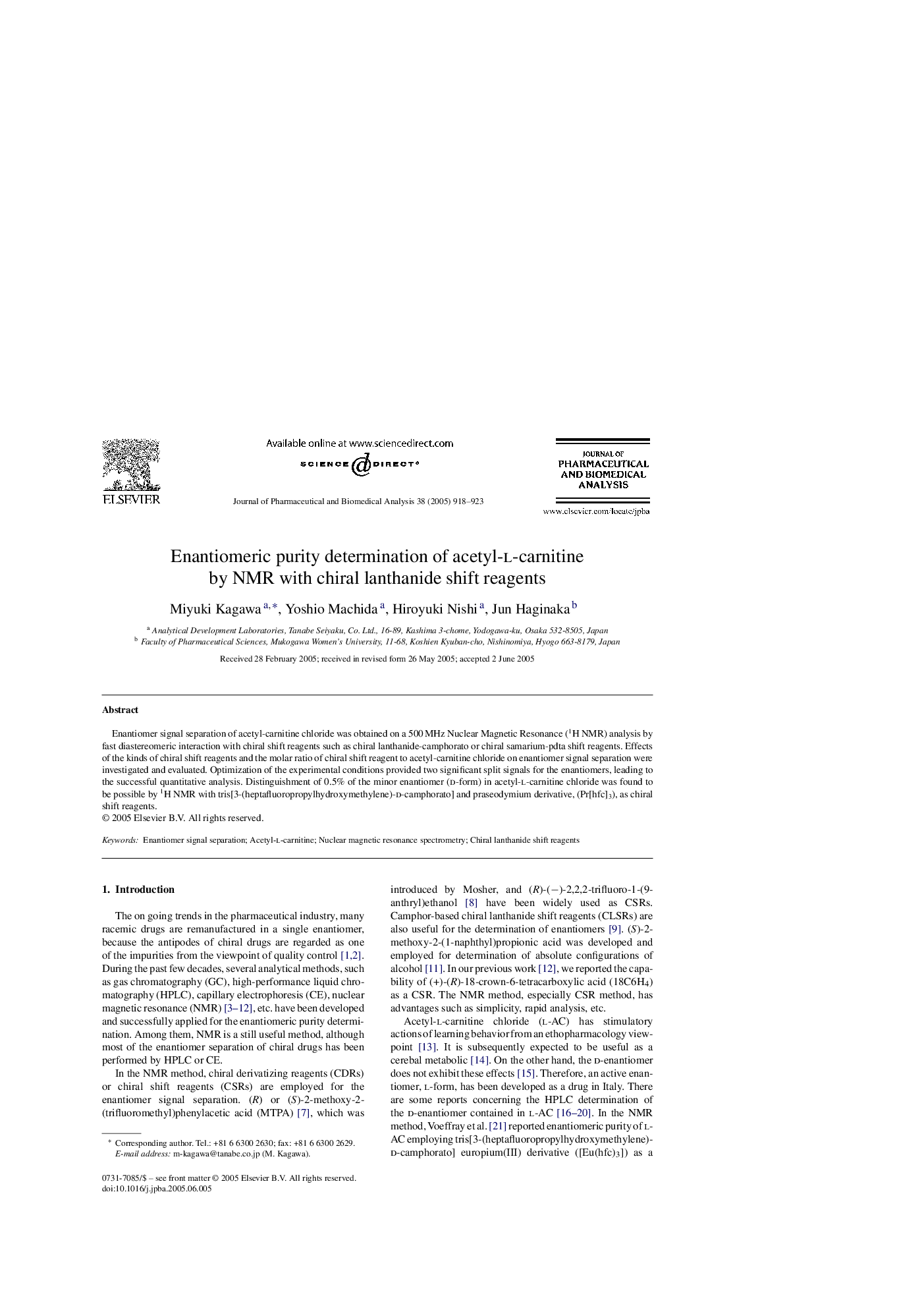| Article ID | Journal | Published Year | Pages | File Type |
|---|---|---|---|---|
| 10553919 | Journal of Pharmaceutical and Biomedical Analysis | 2005 | 6 Pages |
Abstract
Enantiomer signal separation of acetyl-carnitine chloride was obtained on a 500Â MHz Nuclear Magnetic Resonance (1H NMR) analysis by fast diastereomeric interaction with chiral shift reagents such as chiral lanthanide-camphorato or chiral samarium-pdta shift reagents. Effects of the kinds of chiral shift reagents and the molar ratio of chiral shift reagent to acetyl-carnitine chloride on enantiomer signal separation were investigated and evaluated. Optimization of the experimental conditions provided two significant split signals for the enantiomers, leading to the successful quantitative analysis. Distinguishment of 0.5% of the minor enantiomer (d-form) in acetyl-l-carnitine chloride was found to be possible by 1H NMR with tris[3-(heptafluoropropylhydroxymethylene)-d-camphorato] and praseodymium derivative, (Pr[hfc]3), as chiral shift reagents.
Related Topics
Physical Sciences and Engineering
Chemistry
Analytical Chemistry
Authors
Miyuki Kagawa, Yoshio Machida, Hiroyuki Nishi, Jun Haginaka,
